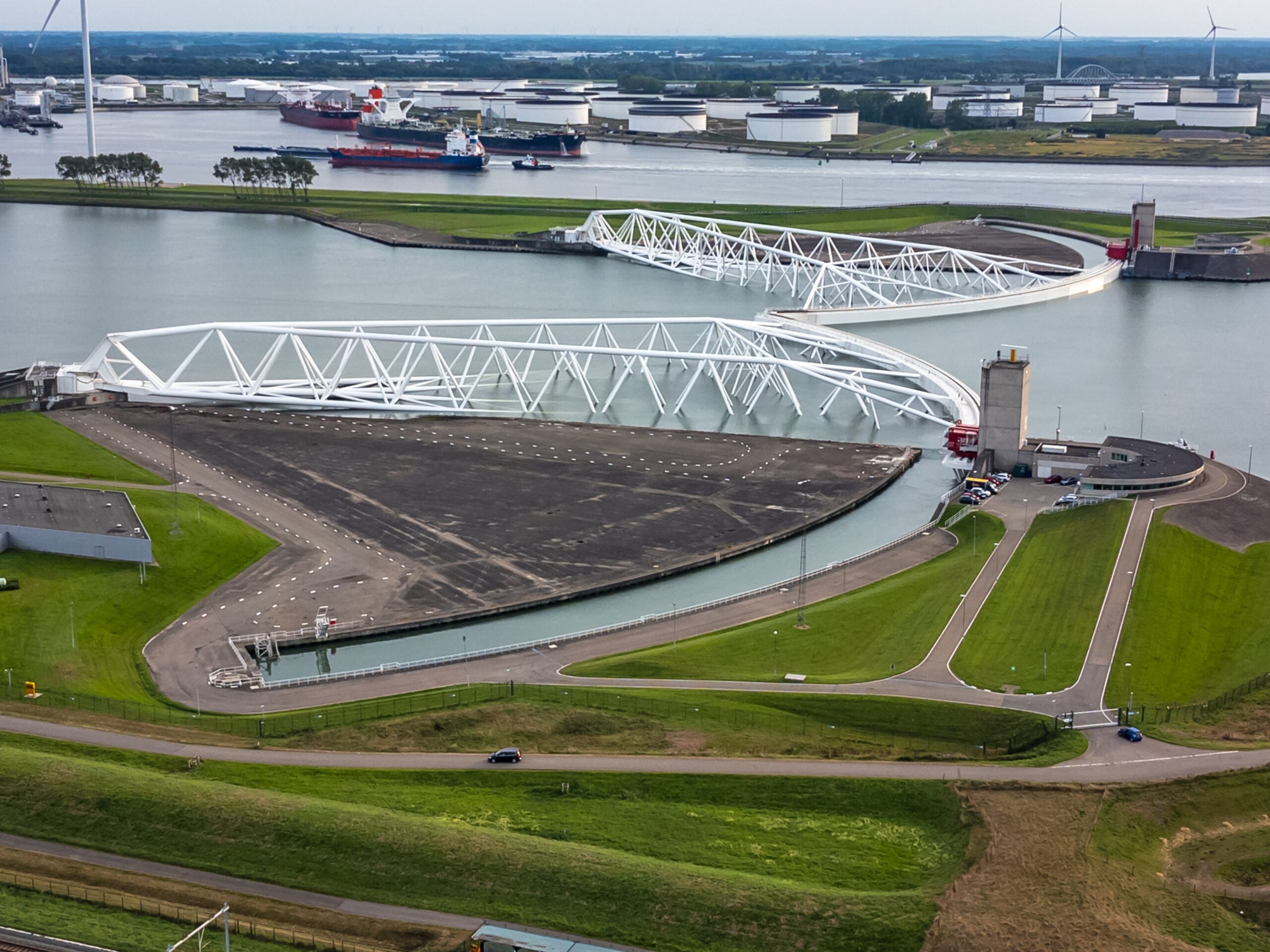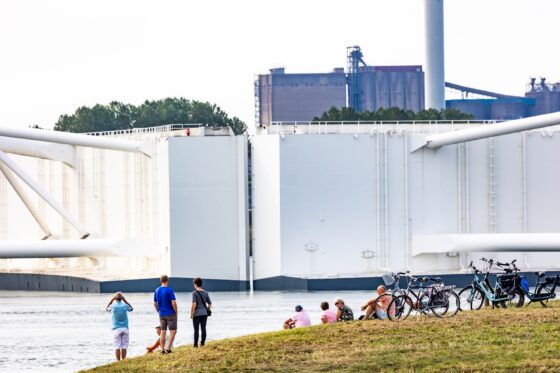Rotterdam’s massive storm surge barrier passes its annual test
Zuza Nazaruk
Hundreds of people turned out on Saturday to watch the Maeslantkering, the 420-metre-long movable storm surge barrier near Rotterdam, close for its annual test. The barrier is essential in protecting the region against flooding and is considered to be one of the seven engineering wonders of the modern world.
The barrier’s two arms, each longer than the Eiffel Tower, took 30 minutes to close and a further 90 minutes to submerge completely. This protection is crucial for a city in the deltas of three rivers, with areas around Rotterdam lying more than six metres below sea level.
“It is a structure containing 12,000 tonnes of steel,” said Jeroen Kramer, a spokesman for the barrier’s operations team. “So it cannot be submerged quickly. Just dropping it in the river would send big waves into Rotterdam”.
The barrier is monitored by centralised computer system which predicts water levels in Rotterdam’s city centre – and will close automatically if the water level in the region rises three metres above NAP.
The annual test is to make sure the system is still working properly. Once the barrier’s six engines are activated, they bring the barrier walls together. Hollow inside, the walls float on the river until they reach each other. Then, the valves open and the barrier sinks into place, preventing storm surges from hitting Rotterdam.
The city’s location dictated the need for a barrier but its proximity to the port of Rotterdam defined its design – the waterway needed to stay navigable. About 300 ships pass the Maeslantkering daily on their way to the port and closing the barrier costs the port €10 million a day.
“There is less traffic on the river during the weekend,” says Kramer, explaining the traditional weekend closure. The infrastructure ministry’s waterways department announces the closure in June, so the port can plan accordingly.
Since it came into operation 26 years ago, the barrier has closed outside the scheduled tests only twice, in 2007 and 2018, when the trigger water level was deliberately reduced to 2.65 metres. “This actual water level is reached every two years,” Kramer says.
The Maeslantkering was finished in 1997 after six years of construction at a cost of € 450 million, or some €738 million at today’s prices. It was the final element in the Delta Works, the massive infrastructure program focused on flood prevention in the wake of the 1953 floods.
As an economically significant and low-lying province, Zuid-Holland was demarcated as a “key dyke area”, where flood defences are significantly stronger than in other parts of the Netherlands.
Recognisable
Today the Maeslantkering is perhaps the most recognisable Dutch flood defence project, both at home and abroad. It is also an important element in Rotterdam’s branding and mayor Achmed Aboutaleb has referred to Rotterdam as “the living lab of climate adaptation, a showcase to the world”.

Some 60,000 visit the information centre every year and there is even a special display dedicated to gifts that foreign delegations bring. “Whenever a natural disaster strikes somewhere, we receive that country’s delegation the following week,” Kramer says.
Challenges ahead
Nevertheless, as sea-level rise as a consequence of global warming, questions are being asked about the Maeslantkering’s long-term function.
Over the 20th century, the sea level on the Dutch coast rose by about 20 centimetres but the KNMI weather bureau suggests that by 2100, the sea level will have risen by between 30 centimetres and 1.21 metres when compared to 1995-2014 levels.
A rise of 60 centimetres means the Maeslantkering would close every year, and this is the maximum acceptable for the port authority. But apart from economic challenges, there are questions about whether the barrier can withstand closing more often. “It was not made to close every month,” Kramer says.
The barrier is already at its maximum weight and cannot be made higher, and more unpredictable weather may also cut into the time available for maintenance.
For now, estimates show that the Maeslantkering can protect Rotterdam at least until 2070. It remains to be seen when and how the superstar of Dutch climate adaptation will need to adapt itself.
Thank you for donating to DutchNews.nl.
We could not provide the Dutch News service, and keep it free of charge, without the generous support of our readers. Your donations allow us to report on issues you tell us matter, and provide you with a summary of the most important Dutch news each day.
Make a donation